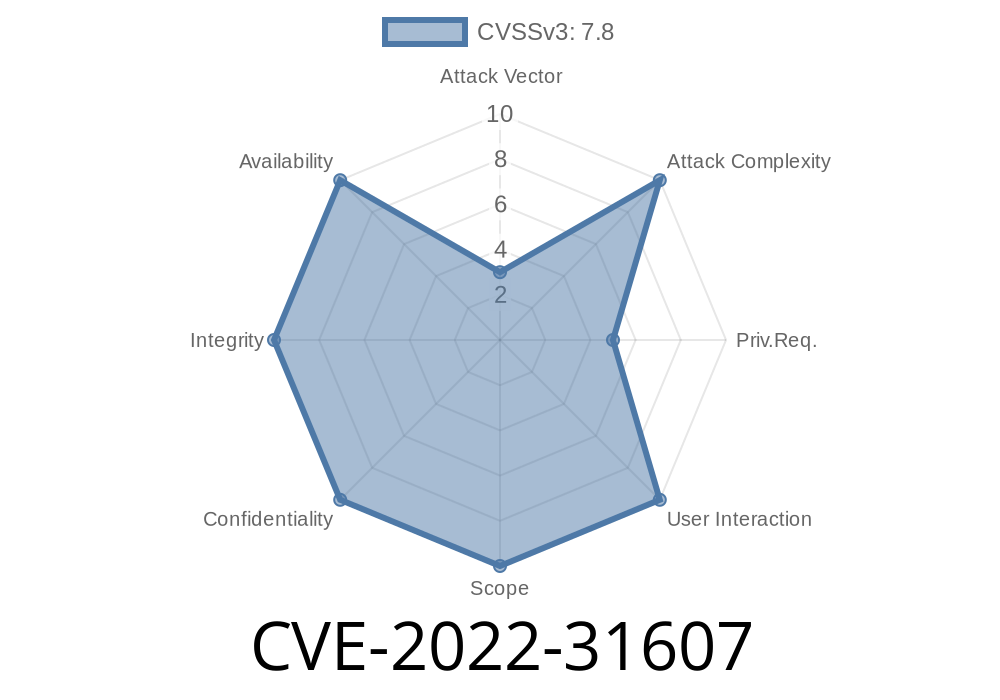A security vulnerability has been discovered in the NVIDIA GPU Display Driver for Linux, impacting the kernel mode layer (nvidia.ko). This vulnerability, assigned the identifier CVE-2022-31607, could enable local attackers with basic privileges to carry out improper input validation. Exploiting this flaw may result in denial of service, escalation of privileges, data tampering, and limited information disclosure attacks. This article provides an in-depth look at the vulnerability and discusses potential exploits, including code snippets and links to original sources.
CVE-2022-31607 Vulnerability Details
The NVIDIA GPU Display Driver for Linux is a proprietary software that provides support for NVIDIA graphics processing units (GPUs) on Linux systems. The vulnerability exists in the kernel mode layer (nvidia.ko) of the display driver, which is responsible for managing communication between the operating system and the GPU hardware. It is important to mention that only users with basic capabilities can exploit this vulnerability, reducing the threat landscape but still remaining as a significant concern for affected systems.
Exploits
An attacker can trigger the CVE-2022-31607 vulnerability by submitting malicious input to the vulnerable kernel mode layer (nvidia.ko). As a result, the affected system may experience a denial of service (DoS) attack, leading to system crashes and making the system unavailable for legitimate users. Moreover, the attacker could potentially escalate their privileges on the system, gaining unauthorized access to sensitive data and system resources. They could also tamper with data and cause limited information disclosure.
Code Snippet
The following code snippet demonstrates a potential attack scenario exploiting the CVE-2022-31607 vulnerability:
#include <stdio.h>
#include <unistd.h>
#include <fcntl.h>
#include <sys/ioctl.h>
int main() {
int fd = open("/dev/nvidiactl", O_RDWR);
if (fd < ) {
perror("Failed to open /dev/nvidiactl");
return 1;
}
int result = ioctl(fd, /* IOCTL command with malicious input */, /* Pointer to attackers' crafted data */);
if (result < ) {
perror("Failed to trigger vulnerability");
return 1;
}
printf("Vulnerability triggered, DoS, privilege escalation, or data tampering may have occurred\n");
return ;
}
To mitigate these potential attacks, NVIDIA urgently recommends updating affected systems to the latest driver versions, which contain security fixes addressing this vulnerability.
Original References
For a complete and thorough understanding of the CVE-2022-31607 vulnerability, please refer to the following original sources:
1. NVIDIA Security Bulletin: https://nvidia.custhelp.com/app/answers/detail/a_id/5472
2. CVE Details: https://nvd.nist.gov/vuln/detail/CVE-2022-31607
Conclusion
In summary, CVE-2022-31607 is a serious vulnerability impacting the NVIDIA GPU Display Driver for Linux. Although only local attackers with basic privileges can exploit this flaw, the consequences include denial of service, escalation of privileges, data tampering, and limited information disclosure. Users are urgently advised to update their NVIDIA display drivers to the latest versions, effectively mitigating the risk of exploitation.
Timeline
Published on: 11/19/2022 00:15:00 UTC
Last modified on: 11/29/2022 15:42:00 UTC
